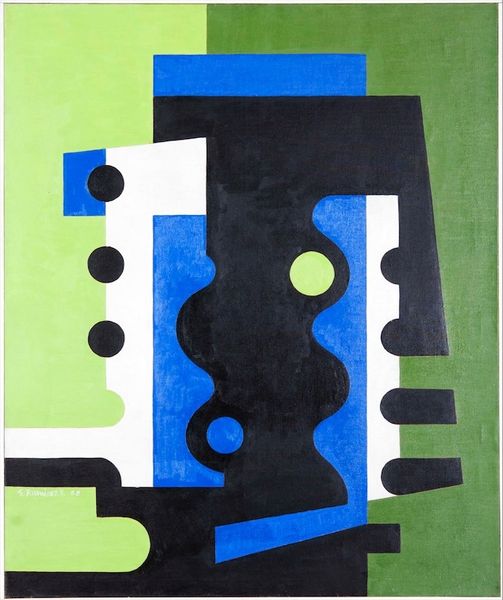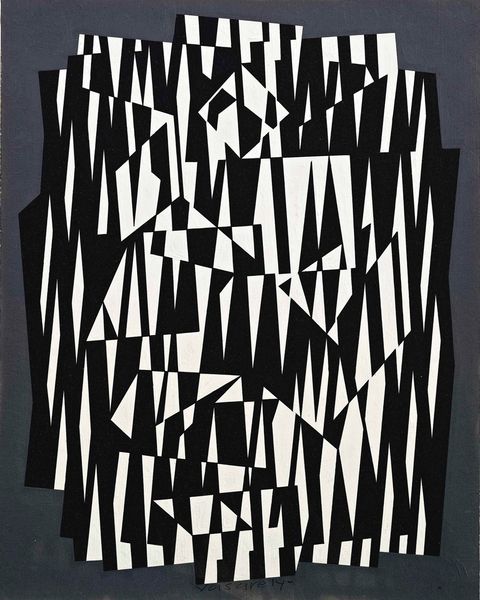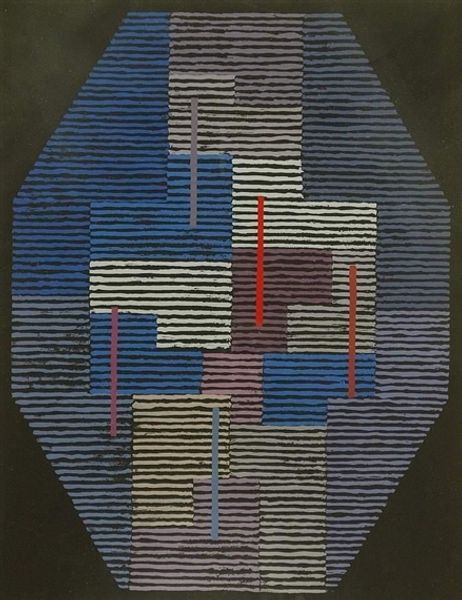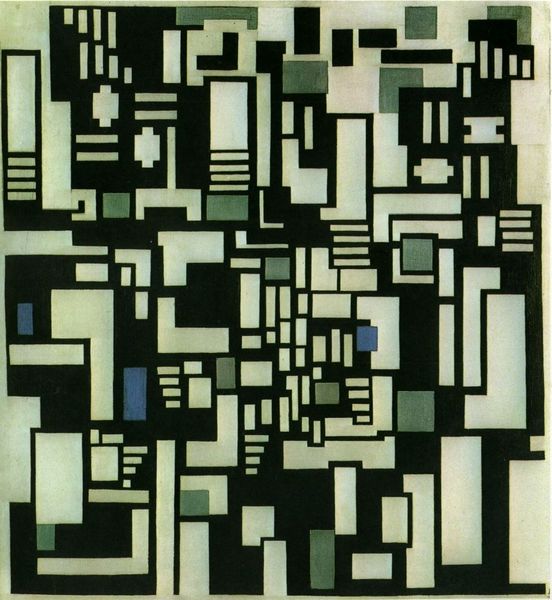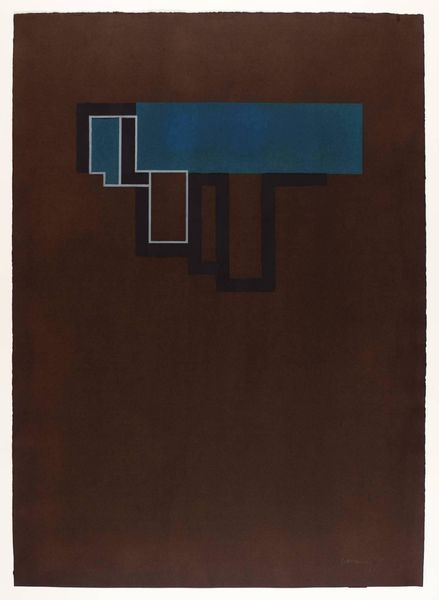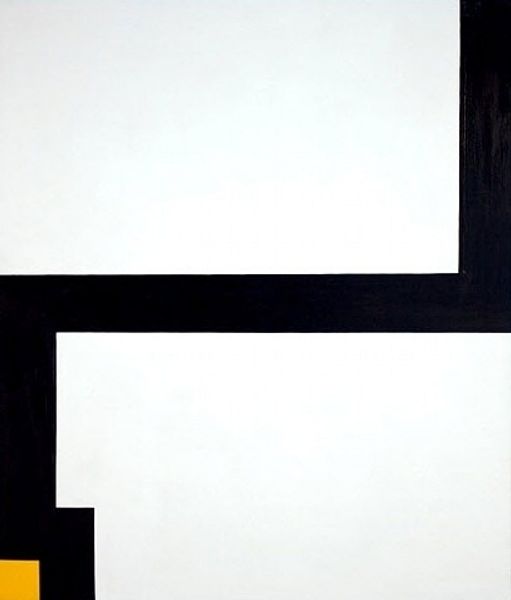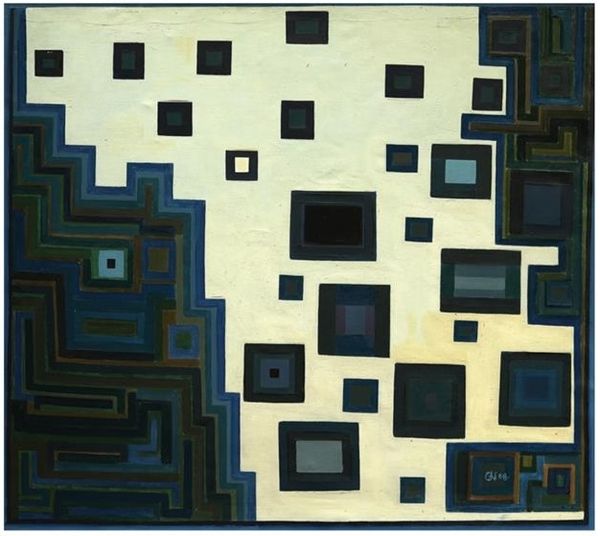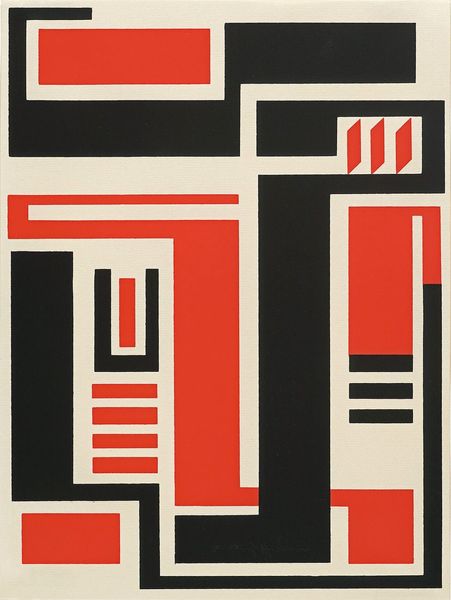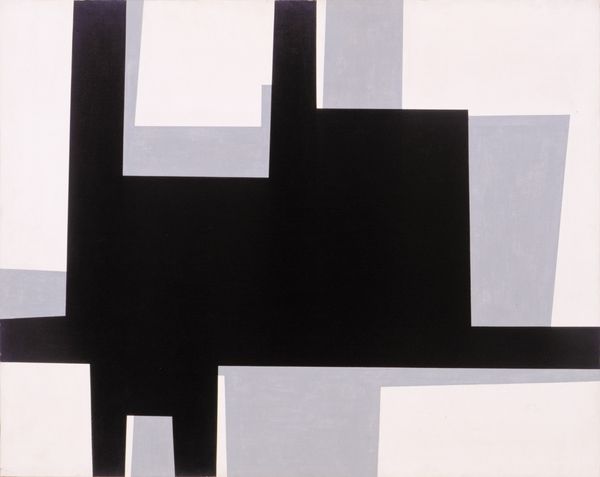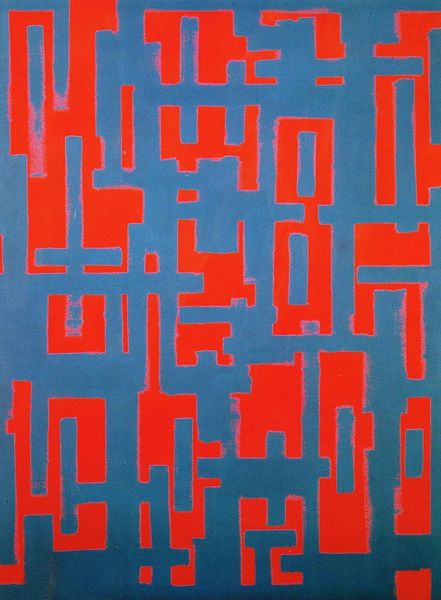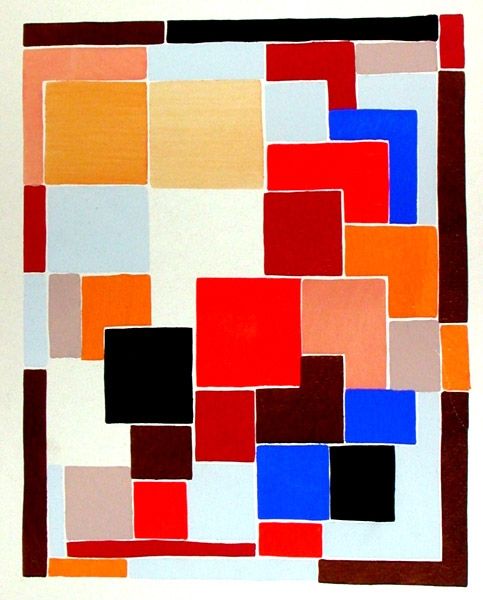
painting, acrylic-paint
#
abstract-expressionism
#
abstract expressionism
#
painting
#
pattern
#
geometric composition
#
pop art
#
acrylic-paint
#
form
#
geometric pattern
#
abstract pattern
#
geometric
#
geometric-abstraction
#
abstraction
#
line
#
abstract art
#
modernism
Copyright: Kazuo Nakamura,Fair Use
Editor: This is Kazuo Nakamura's "Structure, Two Horizons," painted in 1964 using acrylic paint. I'm struck by its rigid geometric forms – they remind me of architectural plans, but ones that have been disrupted or abstracted. What are your initial thoughts on the work? Curator: It's crucial to consider Nakamura’s engagement with material conditions here. What kind of acrylics were available in 1964? The colors seem very deliberate. Considering his titles and repeated shapes, can we consider how labor enters into making art with the constraints of industrial paints and processes? Editor: That’s interesting. It does make me wonder about the process of creating such precise shapes. What exactly are those shapes referring to then, other than "horizons?" Are they supposed to mean anything, or represent certain meanings? Curator: Perhaps instead of searching for symbolic meaning, consider where these geometric forms originated. Mass-produced modular forms entered our collective visual consciousness via manufactured objects; how does the painting reflect industrial production even with individual hand work? Are "horizons" here lines on a graph instead of a landscape vista? How are material limits used here in the service of abstraction? Editor: So, by focusing on the means of production, the context and intention behind the artist are less relevant? Curator: It's not about dismissing intention, but re-evaluating its relationship to the tangible aspects of the artwork, production techniques, the limits of his paints, his labor. Understanding that materials and means of production offer concrete points of engagement, anchoring abstract forms in material history, may offer us something more. Editor: I see what you mean. So, even in abstract art, looking at the tangible and how the artist was making helps in finding different ways to interpret. Thank you! Curator: Exactly! Focusing on how, perhaps, the materials made the work itself.
Comments
No comments
Be the first to comment and join the conversation on the ultimate creative platform.
